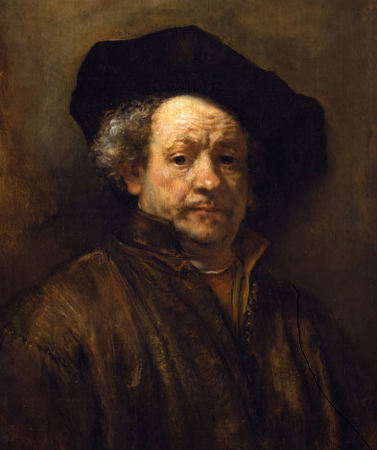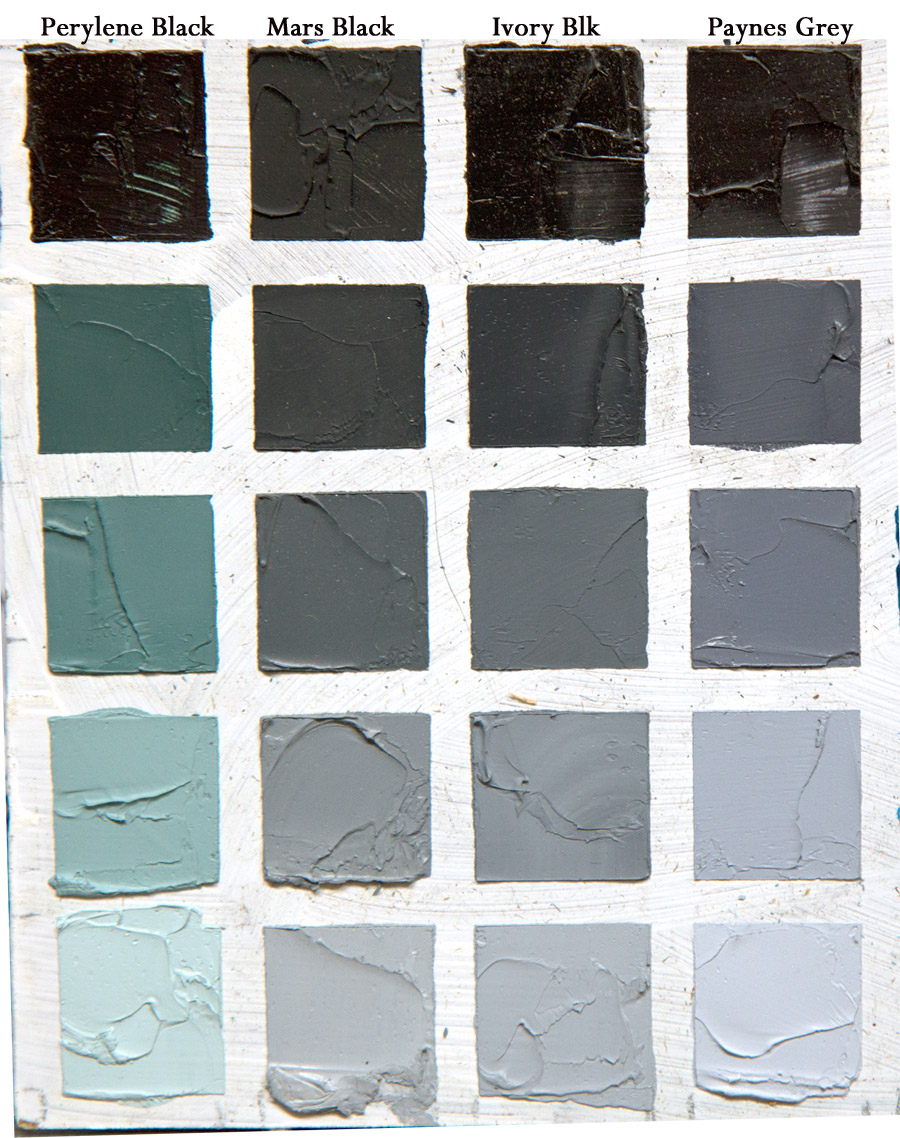
Ivory Black (Bone Black, PBk9) The Romans created this black as an all purpose black by either charring ivory or bones of animals. It is semi transparent and bluish in color but has a brownish tint to it when used thin. Ivory black has a slow drying time and is moderate in its tinting strength. Rembrandt used Ivory black.
Lamp Black ( Carbon Black, PBk6) Lamp Black was originally produced by burning vegetable oils, but these days by burning tar, creosote, naphthalene, or other petroleum products. It is one of the oldest blacks and can be traced back to prehistoric times. Also a slow drying and bluish in color but has a bluish undertone when used thin. It is an opaque color and is stronger in tinting strength then ivory black.
Mars Black (PBk11) Mars Black was developed early in the 20th century. It is an iron pigment in the same family as synthetic iron oxide pigments and has the strongest tinting strength. Mars Black is the warmest of the three blacks when used thick or thin. It has a fast drying time so it’s the best to use as an underpainting color. Mars black also dries very matte.
Payne’s grey is not a black but is a dark color invented in the late 18th century and named after William Payne a 18th a watercolorist. It has a bluish tint and is weaker then any of the blacks above in terms of tinting strength. Payne’s Grey is actually a mixture of a blue and black, usually ultramarine blue and ivory black but every brand is a little different.
Perylene Black (PBk31) invented in 1948 is a black pigment with a strong green undertone. It is a synthetic organic pigment, not carbon or iron oxide based like all the other black pigments. Perylene black has a slow drying time and is transparent.
Below is a small color chart where I mixed each of these dark pigments , the exception being the first square, with white.
